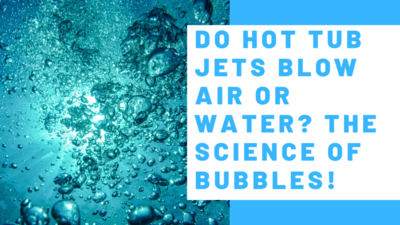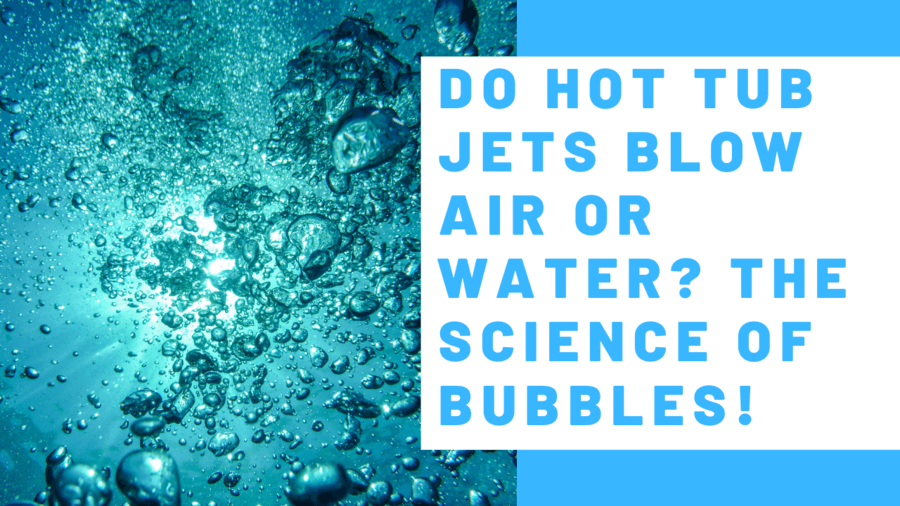
If you have decided to buy a hot tub for your back garden you might be a bit confused about all the different types of hot tub jets available. Do hot tub jets blow air or water? Or perhaps they blow both? I decided that it would be a good idea to research the topic and here is what I found out:
So, do hot tub jets blow air or water? Some hot tubs only have air jets, others only have water jets and others have both air jets and water jets. Therefore, doing some research into the different sensations that each type of jets produces is key to getting your purchasing decision right.
Whether you opt for air jets, water jets or both will have an impact on the type of experience that you can enjoy when you use your hot tub, not to mention the price that you’ll pay. It will also have an impact on the amount of maintenance that the system will require in the long-term to keep it functioning at the optimal level.
What Are The Differences Between Hot Tubs That Have Water Jets And That Have Air Jets?
Airjet tubs and hydrojet tubs have some key differences. Of course, as you might guess from the names, airjet tubs have air jets while hydrojet tubs have water jets. However, it isn’t just the names that are different. There are other things that set the two tub types apart.
Perhaps the main difference is the overall general sensation that air jets and water jets create for the tub user. Air jets blow air from the spa’s bottom into the water to create a gentle, massage-like effect. Meanwhile, water jets shoot warm water mixed with air from jets that have been strategically sited on the tub’s sides. This water/air mix is pushed out at high pressure and can be used for targeting joints and aching muscles for a more powerful user experience.
If you suffer from stiff or painful joints and muscles, you may find that a hot tub with water jets is just what you need to massage away your aches and pains if the jets are correctly positioned. On the other hand, though, if you’d prefer to experience a more gentle and relaxing soak, or are more interested in having a hot tub for socialising with friends or family, an air jet tub would be a better bet. You’ll still enjoy rejuvenating bubbles but they won’t be produced by such high pressure as a water jet system.
Another important difference is that you can keep the water heater switched on while using air jets, but when you use water jets the heater cannot be kept on. This means your water will cool down more quickly if you opt for a water jet tub.
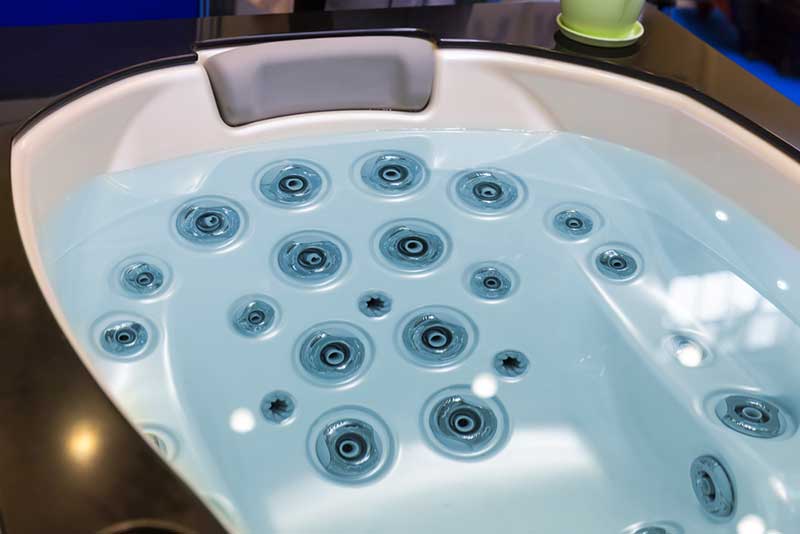
Furthermore, you’ll notice that there’s a difference in price when you’re trying to decide between a water jet and an air jet tub. Water powered jet tubs are a lot more costly than air powered jet models.
Finally, an air jet system will be easier to maintain than a water jet system. This is because they only use air and so the jets are completely dry. Many models even feature a system to dry the jets automatically after use. Conversely, water jets circulate the water through the pipes, and this water can be dirty due to skin cells from bathers and other debris. This means you have to take extra care to stop bacteria from building up inside the system.
Although all types of hot tub need to be maintained regularly, a water jet system will require more ongoing maintenance in the long run and this is something to consider when you’re trying to determine which type is right for your needs.
Is An Air Jet System Right For Me?
To decide whether an air jet hot tub model is right for you, you need to know its attributes and the benefits that it can offer. Here is a summary of some of the features that you can expect if you opt for this type of hot tub.
An air jet hot tub uses only air to create the bubbling effect in the water. Air is blown through tiny holes in the bottom of the spa tub, producing thousands of bubbles which move about freely in the water. The result is a comforting, massaging and effervescent sensation which isn’t especially intense but which is very pleasurable and relaxing. This makes an air jet tub the ideal choice if your primary reason for purchasing is to socialise outdoors with loved ones and friends and to chill out after a hard day at work.
When you choose an air jet tub, drying the tub is much easier than with a water jet model since you can easily drain out the water and then switch the jets back on in order to dry the tub. Also, since water can’t build up inside the system there is less chance of a problem occurring with contamination and bacteria.
If you’d like to use bath salts, bubble bath or aromatherapy oil in your spa you can do this if you opt for an air jet model. This isn’t possible if you choose a water jet system since such substances can introduce pollutants into the system.
You’ll also be able to enjoy heat at the same time as you enjoy the bubbles since air jet systems have inline heaters built in. This means your water will remain at the desired temperature without unwanted cooling for a more relaxing and pleasant soak.
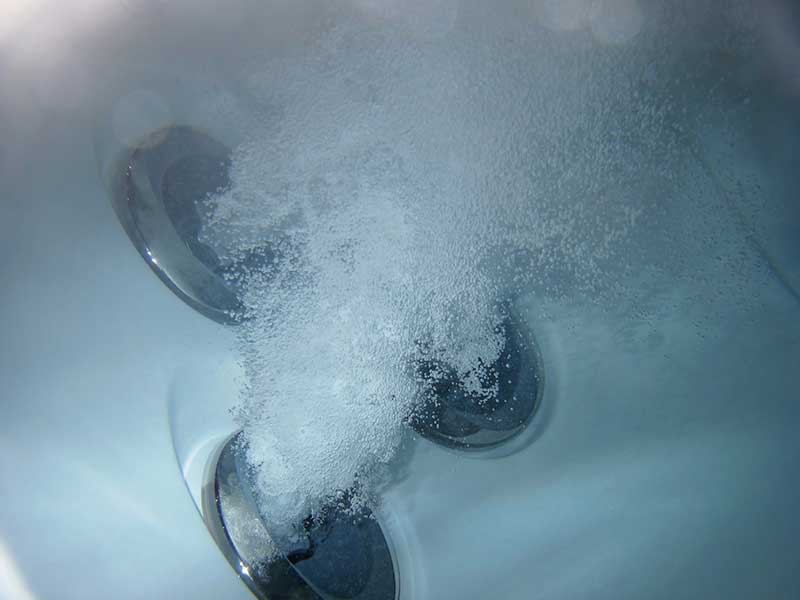
Air jet tubs are lower maintenance since there is no need to clean out the jets on a regular basis. You will, however, still need to sanitise the water on a regular schedule and check and clean the filters whenever necessary.
Is A Water Jet System Right For Me?
If you’re considering a water jet system for your hot tub you’ll need to know the benefits that this type of spa can offer. Using water to create a powerful effect, this type of system allows you to direct the water pressure so that specific areas of the body can be targeted. This allows you to enjoy a true, deep massage experience that is ideal for athletes or anyone with sore and painful muscles or joints.
There are a few downsides to consider, though, when weighing up whether this type of system is right for you. Firstly, you cannot drain a water jet jot tub and then switch the jets back on so the tub can be dried. Worse, water can be left inside the pipes and this, when allowed to stagnate over time, could end up growing bacteria that could be harmful the next time you use the tub. Also, if the system isn’t properly installed, there is an increased risk of contaminants inside the water jets.
Due to the nature of the water jets and the fact that contaminants and bacteria can build up inside the system, this type of hot tub has a more onerous maintenance requirement than an air jet tub. The jets have to be regularly and thoroughly cleaned out. Also, you can’t use any soaps, bath salts or aromatherapy oils in this type of spa since they too can cause pollutants to enter the system. Also, it’s important to remember that, while you’re running the water jets, you won’t be able to run the heater so your water will cool more quickly.
How Do Hot Tub Jets Work?
You now know that some hot tubs have water jets and some have air jets. You probably also know that some will have both. However, you may not know precisely how a hot tub jet works.
Whether your tub has air or water jets or a combination of both, they work by pushing water or air into the spa tub to give you a massage experience while you bathe. The jets use the movement of air or water to produce this bubbling effect.
Both air jet and water jet tubs have a pump. In an air jet tub the pump sucks air into the housing unit then pushes that air into the piping where it is forced through tiny holes in the base of the hot tub to create the bubbling effect. Meanwhile, in a water jet tub, the pump takes water from the tub and pushes it back out through the jets after being filtered and heated. When the water is expelled from the jet it is mixed with air for a powerful massage effect.
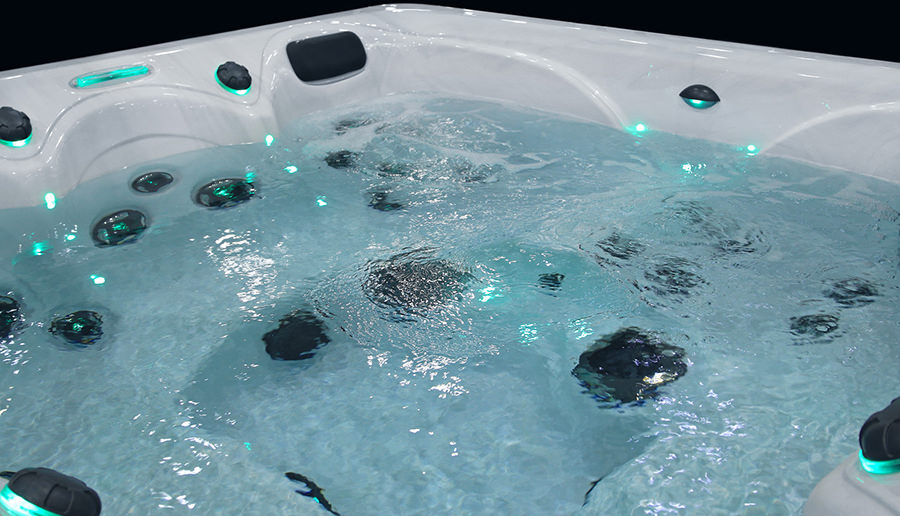
What Kind Of Problems Can Occur With Water Jets?
In general, air jet tubs are relatively straightforward to deal with, but when you have a water jet tub there are a few issues that you might encounter. Here are a few of the problems you may face.
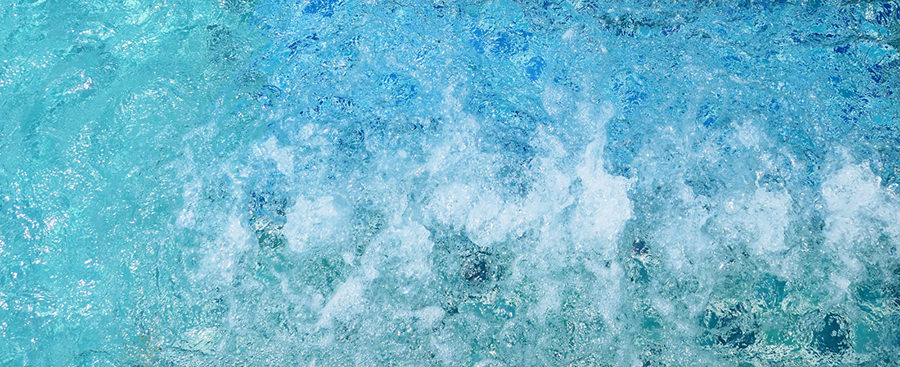
- The jets may become fixed. Many water jet tubs have jets that are designed to move so you can target the massaging bubbles at the right area of your body. However, sometimes, they get stuck in position. This could be due to hard water with excess calcium content that creates scale. This can build up, go hard and cause the jets to lock up.
- You can resolve this issue by testing the water for hardness. If it turns out the scale is the problem, a descaler may help. Otherwise, draining the tub and scrubbing the jets with a stiff brush can help.
- Reduced pressure. Sometimes, after you’ve drained and refilled your tub, you may find air enters the plumbing lines and gets trapped in the pump. This causes it to lock up and stop moving water effectively through the system. As a result, the jets have very little pressure. You can fix the problem by bleeding out some air from the pump.
- Reduced flow of water. If the jets are pulsating instead of supplying a steady water flow, the problem could be that the level of water inside the tub is too low. This allows air to enter the system and results in pulsating jets. Alternatively, the problem could be a clogged or dirty filter which is impeding the flow of water. Take out the filter and clean it or replace it before turning the system on to check the water flow. If neither of these problems is the cause of your reduced water flow, there may be a blockage inside the lines or your pump may be damaged and require replacing.
Related Questions
How can I maintain my hot tub water jets? Your hot tub jets need to be properly maintained in the long term to ensure that they continue to function for as long as possible. Also, in turn, maintaining the jets means that the pump is being protected from damage.
To maintain your jets, you’ll need to flush the hot tub lines out first. You can do this by using a jet line cleaner. You’ll need to remove the filter and clean it separately then add the line cleaner into the water. Switch the pumps on then allow the cleaning solution to begin its work for 15 minutes on full power.
After quarter of an hour, switch the pump off and allow the water to remain for an hour in the tub before running the jets for a further 15 minutes.
Finally, drain the tub and hose any debris from the interior walls during the draining process. This will ensure that any bacteria is eliminated and any soap and dirt is removed from inside the tub. It will also clean out the fittings and jets effectively.
Once the hot tub’s shell is dry, clean the inside of the tub including the jets with a clean cloth to remove any scum or residue then refill the tub and run the jets again before adding the chemicals to sanitise the water.
How often do I need to clean the hot tub water jets? It’s important to take the time to clean out the water jets and the jet lines of your hot tub at least every six months and preferably every three months. This will depend, however, on how frequently you use your spa. If you use it very frequently you may need to clean the jets even more often than that.
Is it best to have more jets or fewer jets in your hot tub? There is a common myth that persists saying that hot tubs that have more jets are better than those with fewer. It’s not hard to see why this theory is out there – after all, a tub that has a larger number of jets is sure to deliver a much better massage experience than one with only a few jets, right? Not necessarily.
The key to an excellent massage experience in a hot tub is getting the balance right between the amount of jets, the size and the water flow that comes from the pump. Each jet added to the tub will reduce the power of the remainder of the jets and if there are more jets than the pump can handle, the massage you receive will be less than impressive.
On the other hand, if there aren’t enough jets for the power of the system, the massage will be too high-pressured and painful. Jet size is important when it comes to delivering a quality massage. Larger jets can handle a greater water flow so they are ideal for the bigger muscles of the body and for carrying out deep tissue massage.
Meanwhile, smaller jets deliver excellent targeted massages so they’re perfect for relieving pressure points. Getting the right jet in the right location is vital for a good massage in your tub. One further factor to consider is the pump. If the pump has too much flow, the massage may be too high pressured and painful.
Conversely, not enough flow from the pump and the water barely trickles out leaving you dissatisfied with your soak.
Finally, the plumbing must also be considered. If it has been poorly designed, the pump may lose a lot of power. So, with all this in mind, how do you know if the hot tub of your choice can deliver the best massage experience?
The only true way of knowing is to try it out before you buy it. If that isn’t possible, the best thing to do is to read as many reviews as you can and to discuss your needs with a professional so that you can make a well-informed decision about which type and model of hot tub is the best option for your unique requirements.

